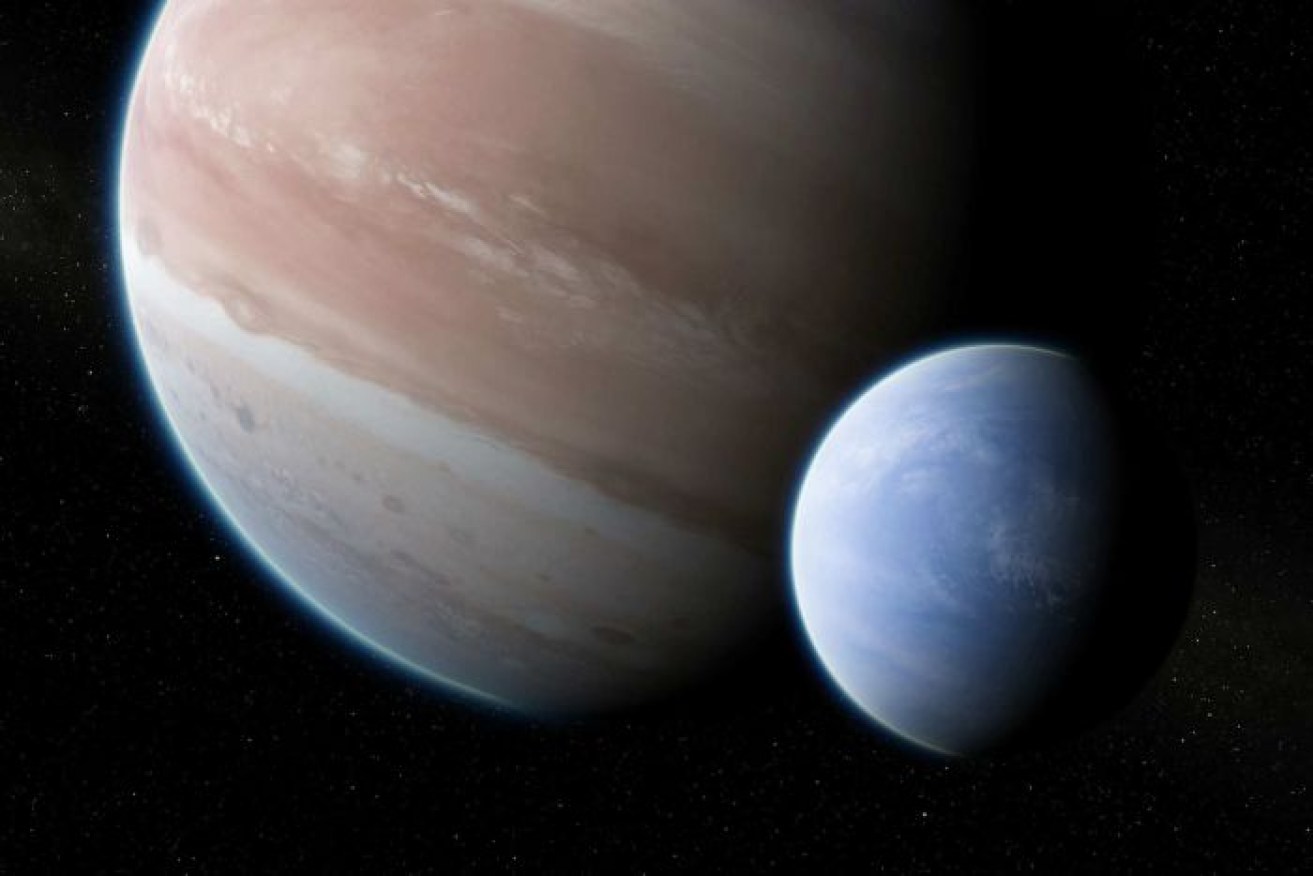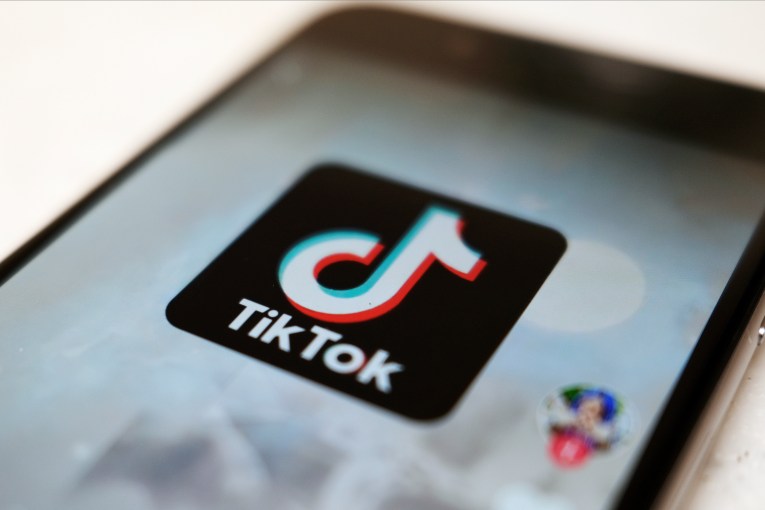Hints of a potential alien moon from Hubble data

Hubble data suggests a Jupiter-sized exoplanet may have a Neptune-sized exomoon. Photo: Dan Durda
Finding alien moons is a tricky business.
Alien moons may be common, but no-one has ever discovered one
Last year a team of exomoon hunters published data that suggested a Jupiter-like planet may have a Neptune-sized moon
Follow up observations using the Hubble Space Telescope strengthen their hypothesis, but they say even more evidence is needed
Questions still remain about how such a big moon could form
Over the past 30 years, astronomers have found thousands of alien planets. But no-one has been able to unambiguously find an exomoon.
Now, new data from the Hubble Space Telescope adds weight to earlier suggestions there might be a Neptune-sized moon orbiting an alien planet 8000 light-years from Earth.
It’s the most compelling evidence yet in the hunt for an alien moon by a team of scientists from Columbia University in New York.
But even they aren’t 100 per cent satisfied that the data, published today in the journal Science Advances, is enough to definitively claim they’ve discovered the first known exomoon.
“The numbers say the moon looks like it is there,” study co-author Alex Teachey said.
But we understand it’s an extraordinary claim and that really requires extraordinary evidence, and from our point of view we’re just a little bit short of that.”
Speculation that Mr Teachey and his PhD supervisor David Kipping were hot on the trail of an exomoon made headlines last year when they requested time on the Hubble telescope.
Following a leak on Twitter, the exomoon hunters published data of nearly 300 alien planets identified by the Kepler Space Telescope.
Dips in the brightness of star Kepler 1625 indicated a Jupiter-sized planet known as 1625b was followed by another body roughly the size and mass of Neptune.
“The Kepler data looked tantalising. It had all the hallmarks we’d expect for an exomoon,” Mr Teachey said.
“But because it was just three transits and it was certainly an unusual system … we felt at the time it wasn’t really enough [evidence].”0
What did Hubble tell us?
The team used the Hubble Space Telescope, which is about four times more sensitive than Kepler, to observe the planet over 40 hours as it moved between us and its star.
Comparisons of the Hubble and the Kepler data showed the planet transited around 72 minutes earlier than expected.
“This is an indication that something is pulling on the planet gravitationally,” Mr Teachey explained.
The Hubble data also showed a second dip in brightness about 3.5 hours after the planet transited across the star.
Mr Teachey said it is still plausible the effects could be due to the transit of another, as yet unidentified, planet beyond 1625b, but this is unlikely.
“As you move further away from the star, the transit probability falls off dramatically,” Mr Teachey said.

Data was gathered by NASA’s Hubble Space Telescope. Photo: Nasa
So while Mr Teachey and Dr Kipping believe the argument is stacking up for the moon hypothesis, they are still cautious.
“It’s still a little premature to claim a discovery outright. There are some lingering difficulties and uncertainties with this thing,” Mr Teachey said.
“So now we put it out for the community to evaluate and pass their own judgement.”
Jonti Horner, an astronomer at the University of Southern Queensland, was cautiously optimistic about the Hubble findings.
“I can’t think what else would explain the Hubble observations on their own,” said Dr Horner, who was not involved in the research.
“The dip is marked and looks like it would if it was a small object transiting at the same distance.”
But, he said, there would be more confidence in the result if the team had captured the end of the dip.
“The [Hubble] telescope wasn’t pointed at it long enough to get it on the way out,” Dr Horner explained.
“It will be more convincing when there is more data is there, but there always comes a question of at what point do you call it and say we are sure now?”
Mystery of Neptune-sized moon
If it does exist, the numbers indicate the Neptune-sized moon would be up to 1.5 per cent the mass of its planet.
While it might be a supersized system, the mass ratio and the distance between the two bodies would be on par with the Earth and our moon, Dr Horner said.
Illustration of an exoplanet and moon
The Jupiter-Neptune system would have a similar mass ratio as the Earth-moon system. (Supplied: Dan Durdas)
But it is a mystery how such a moon — which is bigger than any satellite in our solar system — could form.
Unlike Earth, planet 1625b is a gas giant, so a moon could not be formed from an impact in the same way as our moon.
One possible explanation put forward by the research team is that the moon and planet formed from the same disc, like Jupiter’s moons Io, Europa, Callisto and Ganymede.
“We don’t really know how this would have formed, but this doesn’t mean it couldn’t have,” Dr Horner said.
“When we found the first planets around other stars — the hot Jupiters — everyone said this doesn’t make sense because it’s not how we expect planets to form.
“The problem was we’d built all our ideas about how planets formed on one planetary system — the solar system.”
The search for alien moons continues
Chris Tinney, who heads up the exoplanetary science group at the University of New South Wales, said finding exomoons was an extremely difficult feat.
“The problem is that moons are very small in general compared to planets and finding planets itself is incredibly hard,” said Professor Tinney, who was not involved in the research.
Add trying to catch the orbit of a moon at the right time as it goes around the planet and sun, and it becomes a very complicated picture.
“There is a lot of statistical analysis to try and determine whether … [1625b’s] got an exomoon,” he said. “I don’t think it’s completely proven one way or the other. There’s clearly something else going on in this system.
“But whether it’s an exomoon or not, we’ve probably got to wait for yet another year.”
That’s how long it takes for 1625b to orbit its sun and astronomers will be able to see it transit again.
The next opportunity to do this will be in May 2019.
Mr Teachey and Dr Kipping have put in for more Hubble time, but there are no guarantees.
“If we don’t get the time, maybe someone else will get the time. That would be just fine with us,” Mr Teachey said.
“It would be more convincing … if somebody else came along and got the same answer








